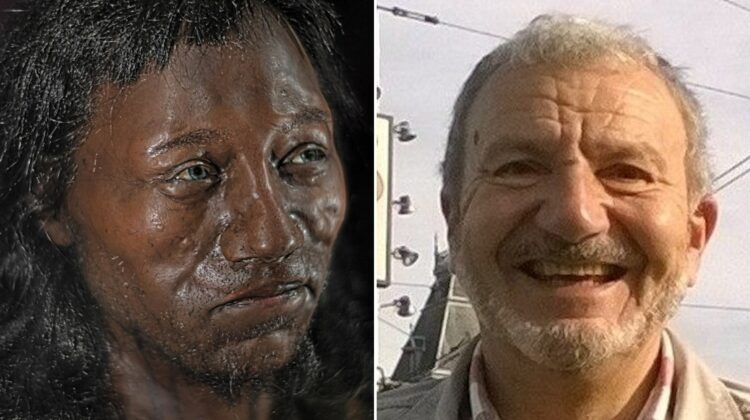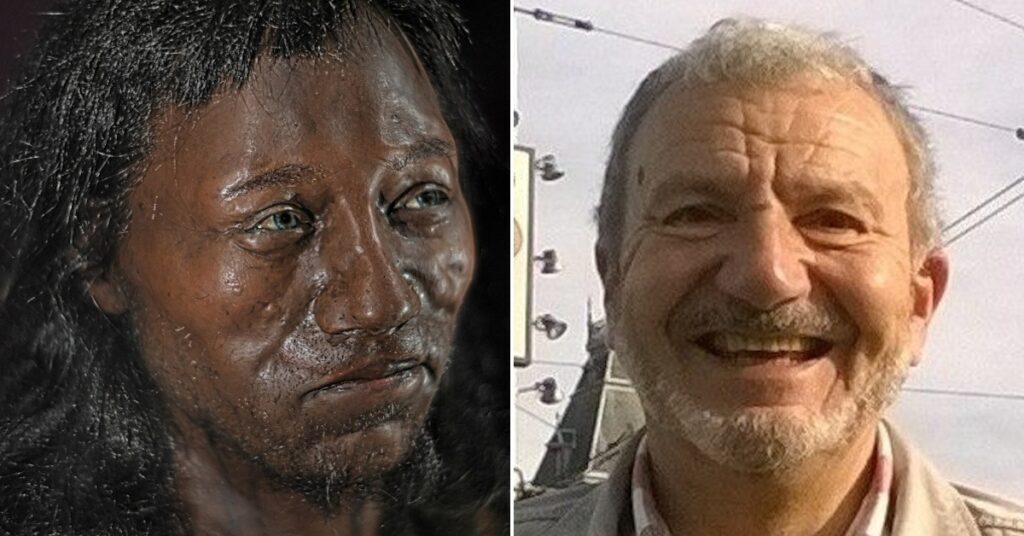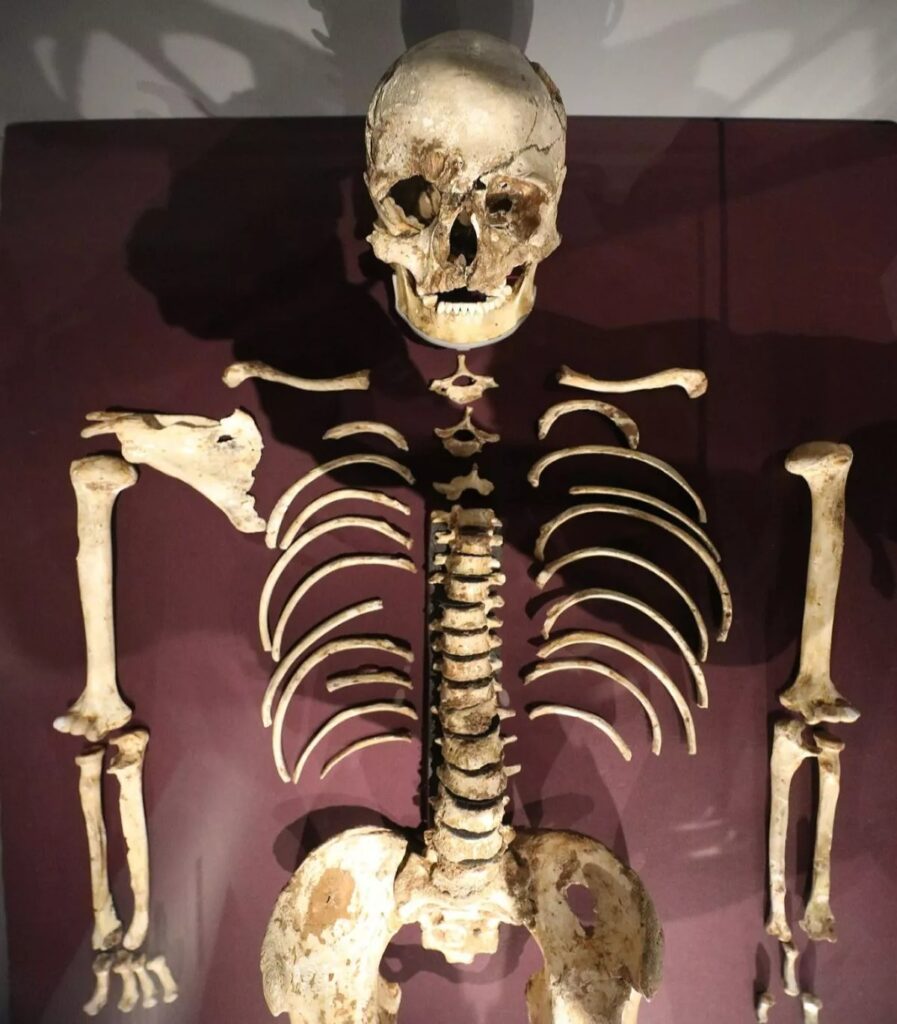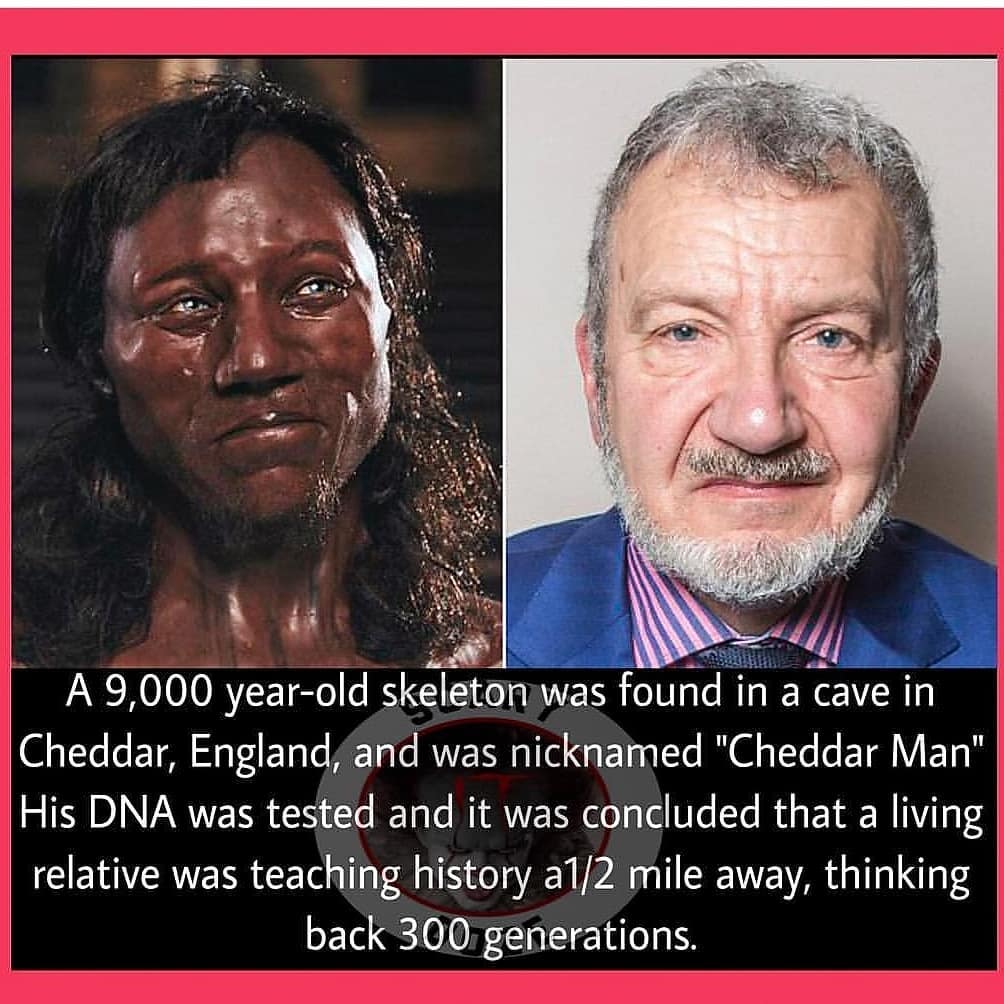
300 Generations Later: Oldest Briton’s DNA Traced to History Teacher Living Half a Mile Away From Where His Skeleton Was Found
Nestled in England’s picturesque Somerset region lies Cheddar Gorge, a limestone ravine hiding millennia-old secrets. In 1903, during drainage work at Gough’s Cave, a stunning discovery emerged: the nearly complete skeleton of a man who lived around 10,000 years ago.

Known as Cheddar Man, this Mesolithic hunter-gatherer’s skeleton, found in a typical cave burial, fascinated scientists for decades. However, it wasn’t until the late 1990s that a remarkable revelation surfaced, bridging a gap of about 300 generations.
In 1996, University of Oxford’s Bryan Sykes extracted mitochondrial DNA from Cheddar Man’s molar, revealing a startling connection. Featured on the UK program “Once Upon a Time in the West,” the discovery linked Cheddar Man’s mitochondrial DNA haplogroup U5 to Adrian Targett, a local history teacher.

This direct maternal lineage connection spans roughly 300 generations, highlighting Targett as Cheddar Man’s descendant through an unbroken maternal line. This genetic link garnered global media attention, emphasizing the remarkable continuity of population in the Cheddar Gorge area over millennia.
The physical resemblance between Cheddar Man and Targett added to the intrigue, with Targett noting similarities in facial features and even eye color. Detailed genetic analysis in 2018 further challenged assumptions about early Britons, revealing Cheddar Man likely had dark skin, curly hair, and blue eyes.

Dr. Tom Booth of London’s Natural History Museum remarked on Cheddar Man’s broader significance, underscoring how his genetic traits defy conventional expectations of ancient Europeans.
The story of Cheddar Man and Adrian Targett illuminates our shared human heritage, linking ancient ancestors with modern inhabitants in a tangible and compelling narrative.

Leave a Reply